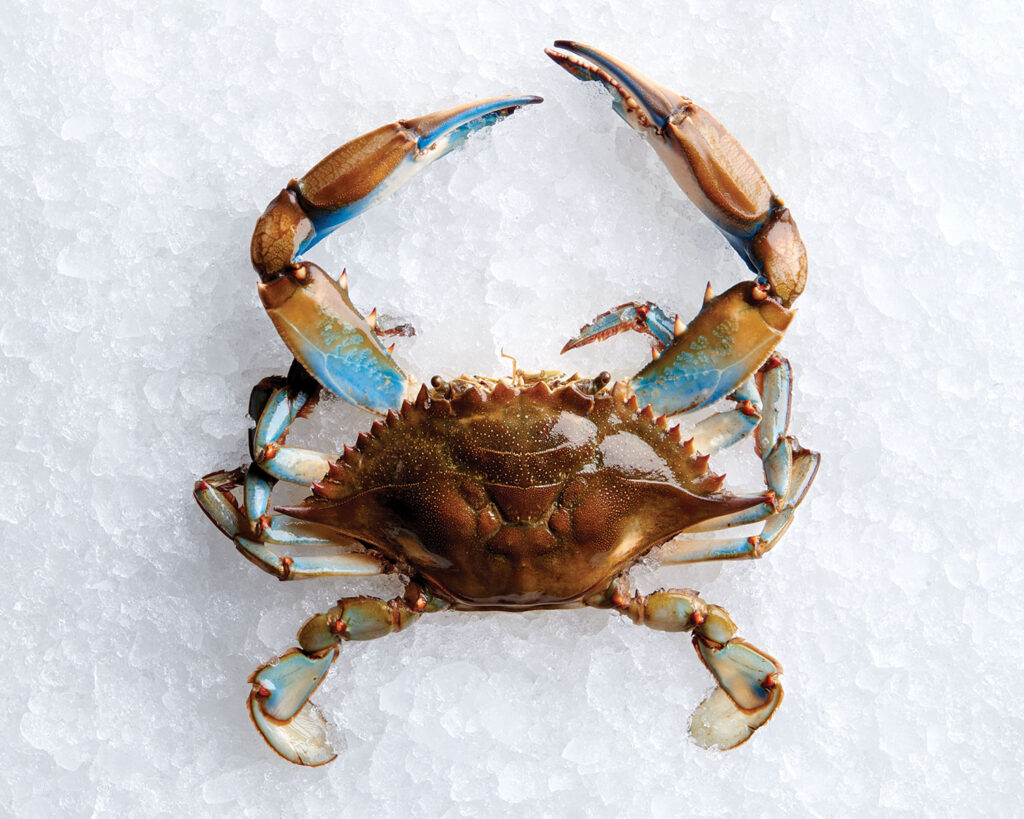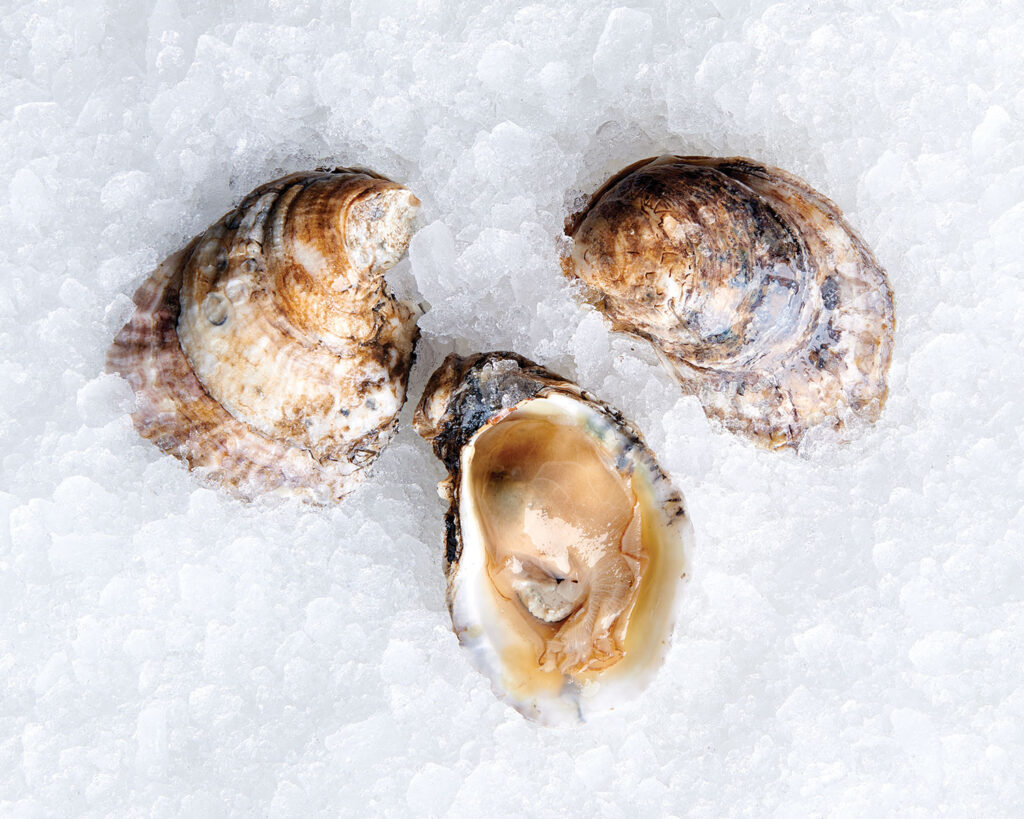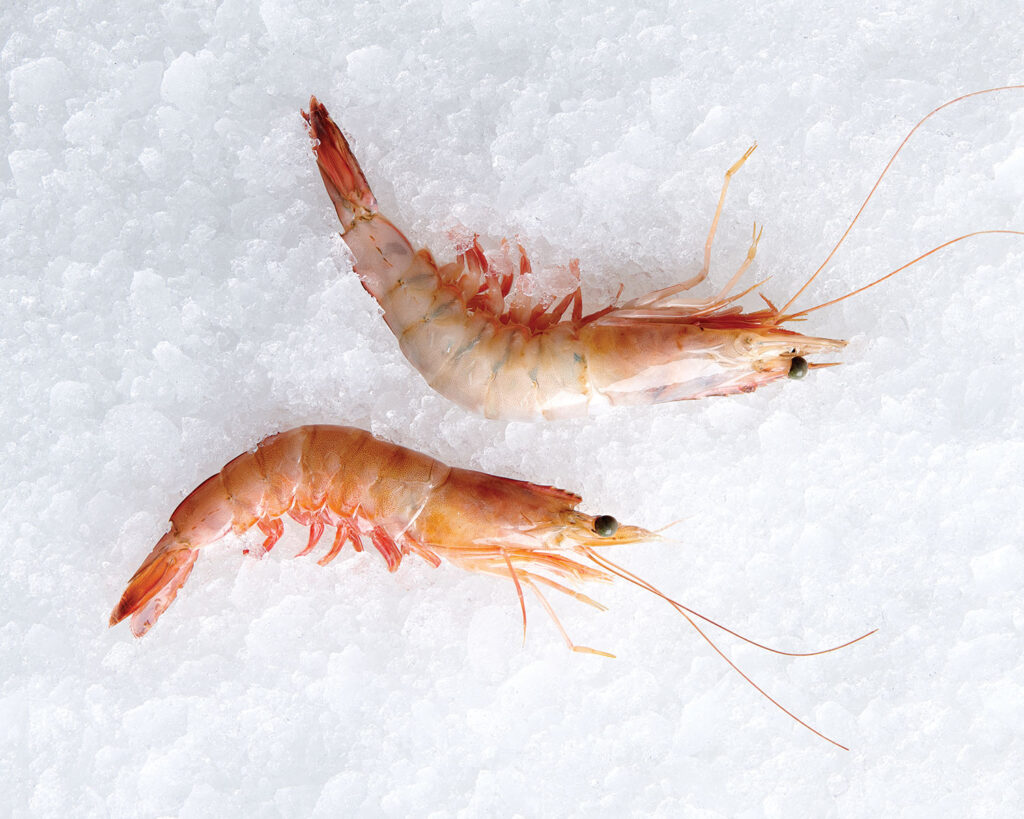NOTHING COMES CLOSE TO FISH FROM OUR COAST
Down in the Gulf, dedicated fishermen play a Texas-sized part in getting the best quality seafood to your plate. They’re pioneers in commercial fishing practices, proudly delivering sustainable, wild-caught finfish to grocers, chefs, and home cooks across the Lone Star State.
GROUPER
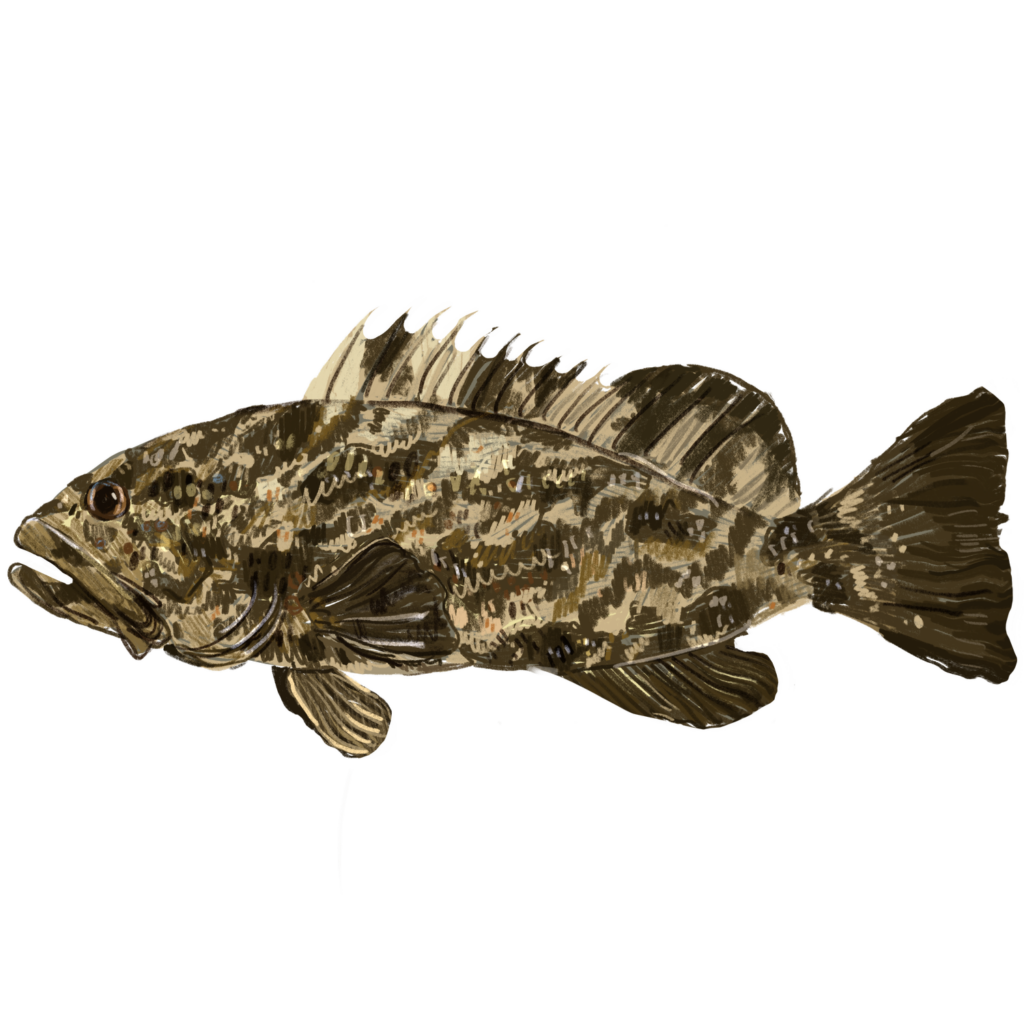
ALSO KNOWN AS
Black grouper, gag grouper, red grouper, scamp grouper, snowy grouper, warsaw grouper, yellowedge grouper
BEST PREPARED
Baked, blackened, boiled, broiled, deep-fried, grilled, poached, sautéed, seared, steamed
COOKING TIP
Large filets should be butterflied before grilling because of their thickness
AVAILABILITY
Year-round, with peaks in the spring
FLAVOR AND TEXTURE
Extra lean, firm, moist and flaky
SAFETY, STORAGE & BUYING TIPS
- When buying whole fish, look for firm, translucent fish, a red gill area, clear eyes, pink or red belly area, a just-caught look and a pleasant, fresh (or non-existent) odor
- When buying fresh fish filets, look for vibrant and moist flesh, a translucent sheen, no gaps of tears between the flakes, and a pleasant, fresh (or non-existent) odor
NUTRITION INFORMATION
Low in saturated fat, and a good source of vitamins B6 and B12, phosphorus, potassium, protein, and selenium
15 TYPES OF GROUPER CALL THE GULF HOME
Just off the Texas Coast in offshore commercial reef fisheries, black, red, yellowfin, gag and a variety of spotted groupers are harvested year-round. They live in shallow, coastal areas during their first two years of their life, before moving on to rocky reefs, underwater mountains and kelp beds. The size of grouper depends on the species type, but grouper found in the Gulf can range from 5 pounds to an enormous 200 pounds.
WHAT’S THE TASTIEST GROUPER IN THE GROUP?
With slight differences in size, flavor and texture, the taste of most groupers is similar: a very light, sweet flavor that’s somewhere between sea bass and halibut. They are generally firmer in texture and have a large, chunkier flake than other white fish, making this prized species great for frying and grilling. Scamp grouper is often considered the best-tasting, followed by black grouper, red grouper and gag.
Grouper is very forgiving; it can be overcooked and still remain moist. You can always just dust your filet with blackened seasoning—it infuses the fish with a subtle spicy flavor that hits all of the right notes.
HOW BIG CAN GROUPER GET?
If everything’s bigger in Texas, add this fish to the list. Goliath groupers can grow up to 800 pounds!
BLACK DRUM
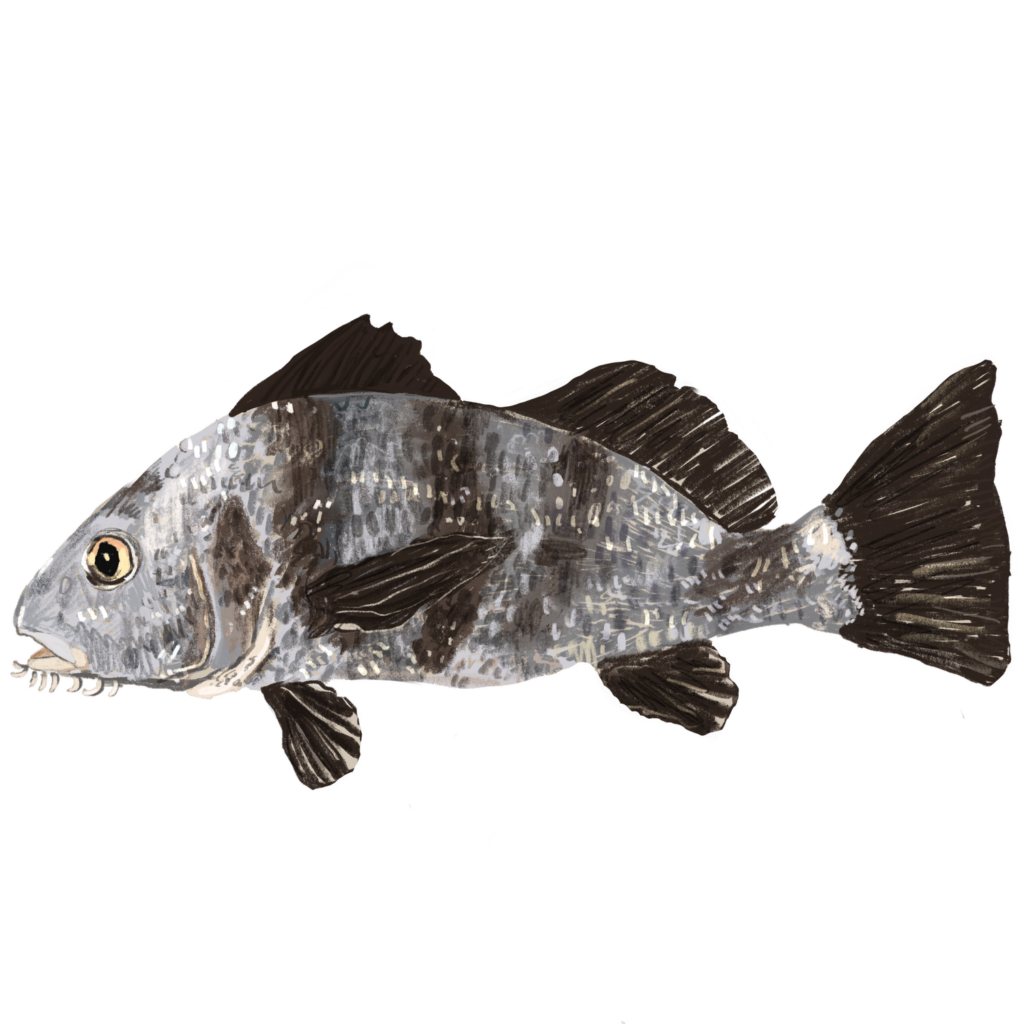
ALSO KNOWN AS
Banded drum, drumfish, gray drum, oyster cracker, saltwater drum, sea drum, striped drum, tambour, Texas drum
BEST PREPARED
Baked, blackened, boiled, broiled, deep-fried, grilled, poached, raw, sautéed, seared, steamed
COOKING TIP
Black and red drum can be used interchangeably, though black drum is a courser, meatier fish that adapts well to just about any recipe
AVAILABILITY
Year-round
FLAVOR AND TEXTURE
Mild, sweet, firm flesh with large, moist and meaty flakes
SAFETY, STORAGE & BUYING TIPS
- When buying whole fish, look for firm, translucent fish, a red gill area, clear eyes, pink or red belly area, a just-caught look and a pleasant, fresh (or non-existent) odor
- When buying fresh fish filets, look for vibrant and moist flesh, a translucent sheen, no gaps of tears between the flakes, and a pleasant, fresh (or non-existent) odor
NUTRITION INFORMATION
Low in fat and saturated fat, a good source of vitamin B12, manganese, vitamin B6, copper and selenium
TEXAS IS A PROUD TOP SUPPLIER OF BLACK DRUM
In fact, our commercial fishing industry harvests over 1.5 million pounds of black drum every year. Weighing up to ninety pounds, black drum is the largest member of the drum family. This chunky, high-backed fish can be spotted in the wild by a patch of whisker-like barbels on its chin. They’re commonly harvested near oyster reefs, which are a primary food source—giving this fish’s nickname, “oyster cracker.”
SMALLER BLACK DRUM ARE ALWAYS A KEEPER
Black drum contains less fat and has a higher oil content, which gives the meat a sweet and aromatic flavor. The younger fish (also known as “puppy drum”) tend to taste better, because their flavor is milder, while larger drum have a robust fish flavor and firmer texture. The firm, moist meat easily breaks into large flakes, making it a great option for all kinds of dishes like chowders, stews, fish tacos and fish-frys. That said, the simplest cooking method is a dusting of blackened seasoning and a good sear on a cast iron skillet.
DID YOU KNOW DRUM ARE TRICKY FISH?
Black drum grow to tremendous sizes and are one of the most popular sport fish for anglers to target because they’re ferocious fighters.
RED DRUM
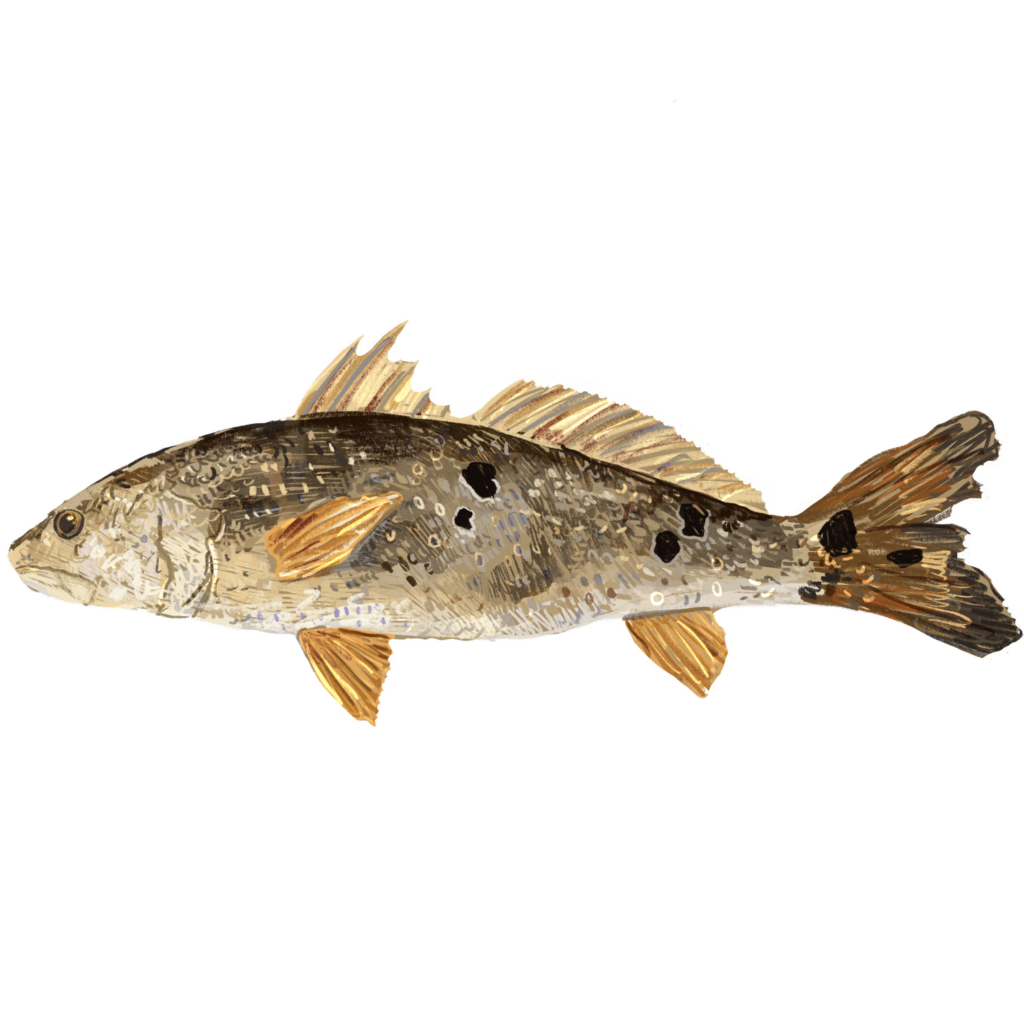
ALSO KNOWN AS
Channel bass, redfish, spottail bass
BEST PREPARED
Baked, blackened, boiled, deep-fried, grilled, poached, sautéed, seared, steamed
COOKING TIP
A cousin of the black drum, this flaky succulent fish has a mild, sweet flavor that’s ideal for blackening
AVAILABILITY
Available year round for recreational fishing, supplied to markets from aquaculture year-round
FLAVOR AND TEXTURE
Mild, sweet, firm, moist and flaky
SAFETY, STORAGE & BUYING TIPS
- When buying whole fish, look for firm, translucent fish, a red gill area, clear eyes, pink or red belly area, a just-caught look and a pleasant, fresh (or non-existent) odor
- When buying fresh fish filets, look for vibrant and moist flesh, a translucent sheen, no gaps of tears between the flakes, and a pleasant, fresh (or non-existent) odor
NUTRITION INFORMATION
Low in fat and saturated fat, a good source of vitamin B12, manganese, vitamin B6, copper and selenium
KEEPING RED DRUM THRIVING IN THE GULF
A prize for recreational fishers, red drum (commonly known in Texas as redfish) is arguably the Gulf’s most recognizable fish. You can identify this redfish through its reddish-bronze or nearly silver body and distinctive large black spot near the base of its tail fin. Sometimes they have multiple spots, but unlike other drum fish, they have no whiskers on their chin.
To protect this species from being overfished, it’s not harvested by commercial fisheries. Lucky for redfish fans, Texas has a robust pond-culture industry that raises red drum for retail and restaurant menus, making it available for eating year-round. So if you want one to taste a red drum from the wild, you’ll have to hook one for yourself. The best time of year is generally late summer into the fall.
CALL IT RED DRUM OR REDFISH, IT’S DELICIOUS
This cousin of the black drum offers a firm, white texture and mild, sweet flavor that’s perfectly tasty with blackened seasoning. You can simply dip red drum filets in butter, rub them all over with Cajun spices, and then sear them in a very hot skillet.
WHY IS IT CALLED DRUM FISH?
They get their name from the drumming (or croaking) sound that they make, which is for attracting mates.
RED SNAPPER
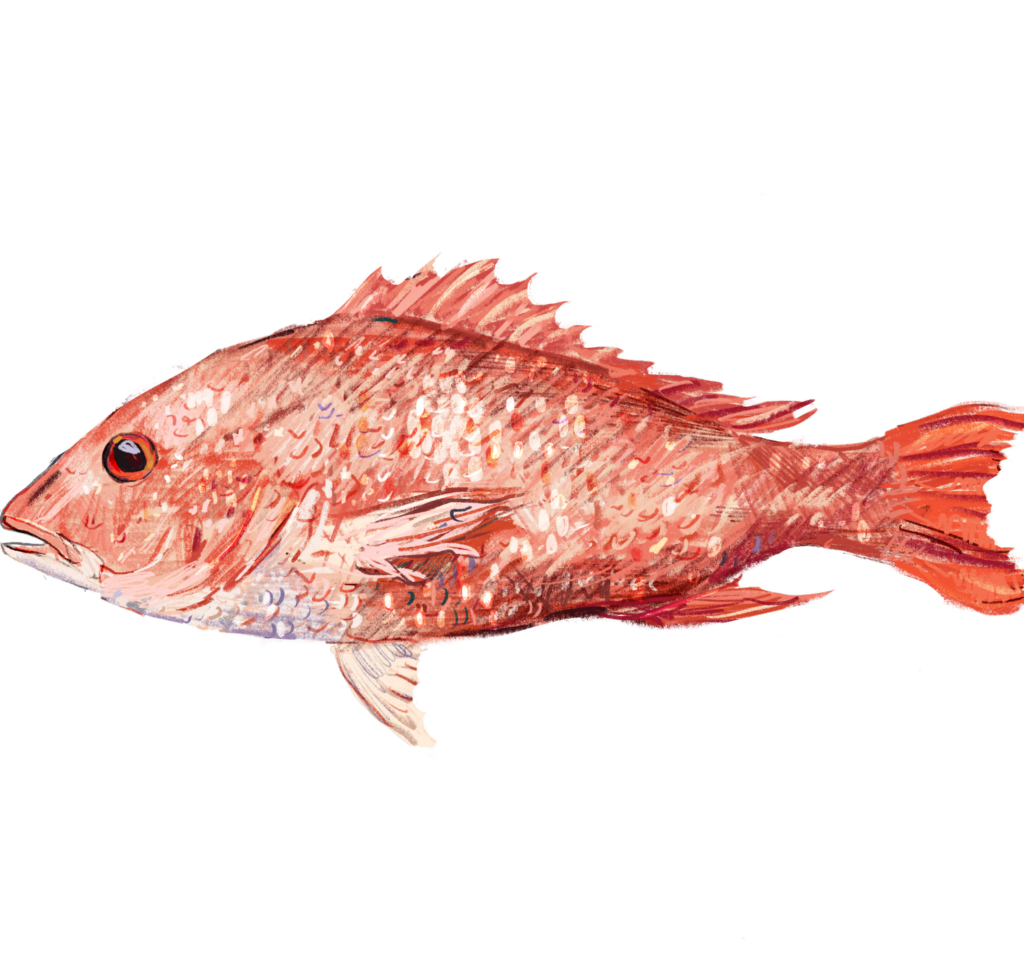
ALSO KNOWN AS
American red, snapper, spot snapper
BEST PREPARED
Baked, boiled, broiled, deep-fried, grilled, poached, sauteed, seared, steamed
COOKING TIP
Since snapper filets are so thin, it’s common to roast the fish whole so no meat goes to waste
AVAILABILITY
Year-round
FLAVOR AND TEXTURE
Distinctly sweet, mild flavor, extra lean, moist and semi-firm
SAFETY, STORAGE & BUYING TIPS
- When buying whole fish, look for firm, translucent fish, a red gill area, clear eyes, pink or red belly area, a just-caught look and a pleasant, fresh (or non-existent) odor
- When buying fresh fish filets, look for vibrant and moist flesh, a translucent sheen, no gaps of tears between the flakes, and a pleasant, fresh (or non-existent) odor
NUTRITION INFORMATION
Low in saturated fat and sodium, and a very good source of protein
HOW TO PICK & PREPARE SNAPPER
Join Marine Scientist Kimber Anderson as she visits her local grocery store to show you how to pick and prepare red snapper from Texas.
WILD RED SNAPPER IS A PREMIUM CATCH
Snapper is a very large family of fish with multiple unique species found in the Gulf. As young fish, they may be found on muddy bottoms or inshore, but adult red snapper are primarily harvested near deep, underwater structures, like piers and pipeline valves. Their skin is rosy red with a pair of matching eyes and also have pretty big teeth, which is why they’re called “snappers.” To aid in identification, they are usually sold at seafood counters with the skin on.
A POPULAR CHOICE FOR ANY FISH DISH
Gulf red snapper are considered especially delicious, given their light flavor and flaky texture. This fish takes seasoning extremely well and cooks quickly, no matter how it’s prepared. The meat is pinkish with yellow tones when raw and turns somewhat lighter when cooked. With broad, sloped bodies and small dorsal fins, all snapper species are beautiful when presented whole-roasted.
WHAT’S SO SPECIAL ABOUT SNAPPER?
They can live a long time—red snapper as old as 57 years have been reported in the Gulf.


